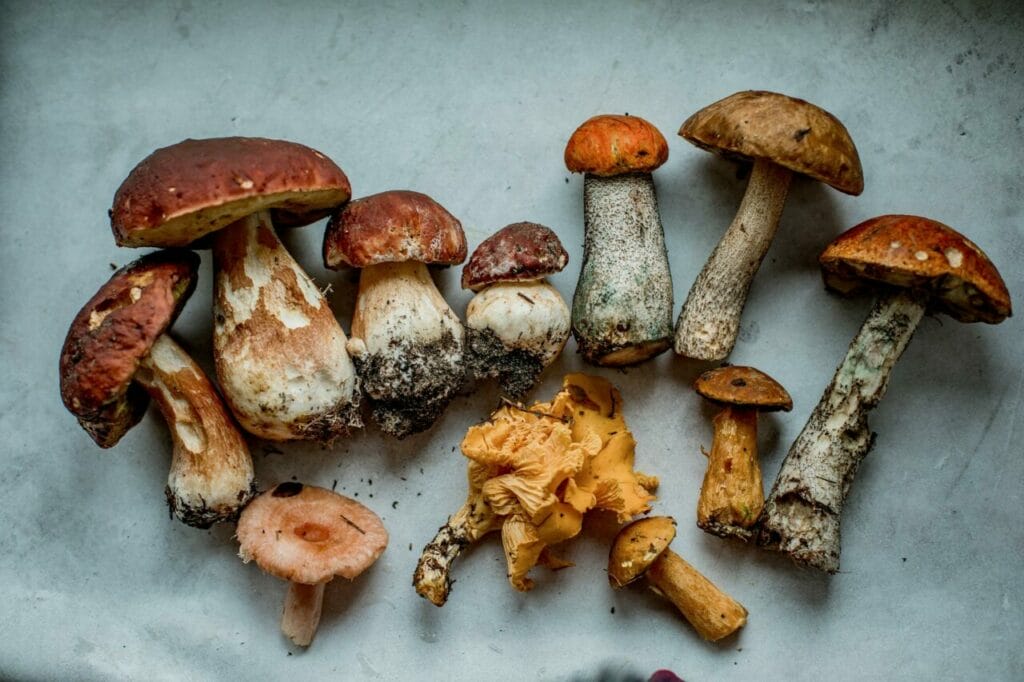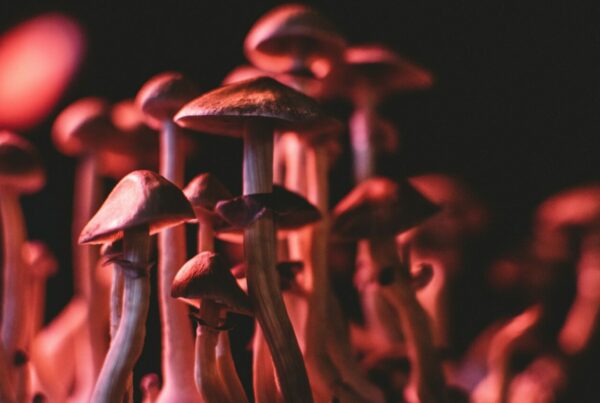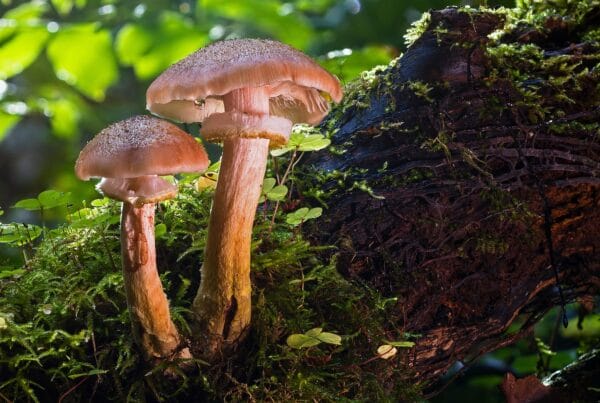Typical anxiety treatments encompass medication and therapy. However, because of possible side effects, these methods may not work for everyone. This has spurred a growing interest in alternative solutions like psychedelic therapy, which employs substances like “magic mushrooms Montreal” and others.
We are your premier resource for purchasing psychedelics online in Canada. We provide efficient, secure, and discreet services.
[toc]Key Takeaways:
- Psychedelic therapy combines the restorative effects of psychedelic substances with conventional talk therapy to facilitate the healing journey.
- Psychedelic therapy can boost emotional health and overall quality of life through spiritual exploration.
- The integration process is an essential strategy in psychedelic therapy aimed at ensuring the sustained effectiveness of the therapy session.

Statistics on Anxiety Disorders in Canada
According to the 2022 Mental Health and Access to Care Survey, there is a concerning increase in the prevalence of anxiety disorders in Canada. The proportion of Canadians aged 15 and older diagnosed with generalized anxiety disorder in the 12 months preceding the survey has risen from 2.6% in 2012 to 5.2% in 2022.
A Comparison Between Traditional Treatment and Psychedelic Therapy
Common treatments for anxiety disorders typically involve a combination of psychotherapy and medication. Psychotherapy, also referred to as psychological counselling, is a collaborative process between a therapist and the patient to mitigate anxiety symptoms.
In contrast, anxiety medications alleviate symptoms by tailoring the treatment to the specific type of anxiety disorder and considering any concurrent mental or physical health problems. Although treatment may differ based on individual situations, the core strategies are psychotherapy and medication.
In psychedelic therapy, sessions are unique as they include one or two doses of a psychedelic substance, in addition to other therapeutic techniques:
Psychedelic Therapy
Psychedelic therapy is a therapeutic approach that harnesses the advantages of psychedelic substances to enhance the healing journey. These substances, known for their hallucinogenic properties, have been integral to holistic medicine and spiritual rituals in diverse cultures for millennia.
The two primary substances used in this therapy are Lysergic acid diethylamide (LSD) and psilocybin. LSD induces alterations in mood, perception, and consciousness. Psilocybin, as mentioned on the Health Canada website, is the active ingredient in magic mushrooms. Consuming these mushrooms can induce sensory perceptions, including visual, auditory, or tactile hallucinations.
Dosage Overview for Three Sessions
In psychedelic therapy, specialists assess patients to determine the appropriate psilocybin dosage for their sessions. Dosages can vary, with some patients starting at moderate levels, while others can withstand larger amounts. The treatment generally consists of one to three medication sessions, each lasting between six to eight hours and spaced several weeks apart. This method is different from traditional medications that require daily intake until further guidance from a healthcare provider.
Spiritual and Transformational Experience
Unlike anxiety medications designed to manage symptoms, therapy aims to address the root causes of the disorder. Psychedelic therapy can have a significant impact on emotional health and quality of life.
The immersive experiences can lead to profound insights, increased self-awareness, and enhanced emotional processing. These effects can stimulate personal development, inspire positive behavioral changes, and elevate overall mental health.
Effects
| Expanded Consciousness | Altered states of consciousness provide a renewed worldview. | These enhanced perceptions often result in: Deep insightsEpiphaniesImproved understanding of oneself and the surrounding environment |
| Emotional Healing | Enables emotional healing by offering the chance to confront and process unresolved trauma, grief, or emotional distress. | This process aids in:Accessing deeply hidden emotionsReleasing emotional obstaclesPromoting emotional health |
| Increased Self-Awareness | Amplifies connectivity among sensory brain regions while reducing connectivity within the default mode network. This network integrates brain areas that are interconnected, focusing on self-focused thinking and the individual’s subjective perception of themselves.” | These regions aim to: Modify negative thought patterns, beliefs, and habitual behaviors. Empower users to gain profound understanding of their authentic selves, motivations, and interpersonal interactions. |
Somatic Therapy
Somatic therapy, while not traditionally linked to psychedelic therapy, is gaining recognition for its potential benefits. This body-centric approach explores the connection between the mind and body. It’s based on the theory that past traumas can result in sensations becoming trapped in the body. Somatic therapists help individuals identify these bodily sensations and use therapeutic methods to alleviate this tension.
Integration
This creates a platform for clients to attain clarity, acquire perspective, and garner wisdom from their psychedelic experiences. The transformative process occurs during integration sessions with the therapist and the client’s proactive efforts outside of psychedelic journeys. Integration enhances the transformative impacts of psychedelics by actively engaging with emerged insights and emotional revelations.
Types of Integration
- Journaling. By documenting experiences, individuals can cement memories for easier future recollection. It also enables clients to analyze their experiences from various perspectives to reveal different interpretations, meanings, and connections.
- Art. This provides a powerful conduit to encapsulate the complex emotions and feelings from a psychedelic journey in a creative and visually expressive manner.
- Utilizing Nature-based Methods. These can be as simple as engaging in mindful walks in the woods or finding peace near a tranquil body of water. Therapists can help clients recognize complex patterns present in nature or suggest the use of natural elements like plants, stones, water, and candles as grounding tools.
- Participation in Integration Groups. Group sessions with individuals sharing similar experiences offer a significant platform for reflection, support, and connection. The capacity of psychedelic therapy to foster a sense of interdependence and shared understanding beyond individual boundaries is at its essence.
The Importance of These Techniques in Treating Anxiety
The fundamental pharmacological principle behind all psychedelics is their ability to act as agonists, or triggers, of serotonin (5-HT) 2A receptor. Psychedelic research centers heavily on their influence over the brain’s default mode network. This network is predominantly connected with repetitive thoughts and is linked to conditions such as depression and anxiety disorders. Treatment can significantly reduce anxiety levels, with effects lasting up to 12 months after treatment.
After a psilocybin session, which often includes profound spiritual experiences, the patient partakes in a conversation with their therapist. In these therapeutic discussions, trained healthcare professionals aim to listen carefully to the patient. They also employ specific methods and strategies to enhance the positive outcomes of the treatment.
All these techniques work together to help those suffering from anxiety achieve lasting relief in fewer sessions than traditional treatments.
Revolutionize Your World, One Session at a Time
Many people rely on standard treatments for anxiety, but these methods are not always effective or satisfying for everyone. Psychedelic therapy offers an alternative, using innovative methods that can trigger transformative experiences. These techniques work together to generate significant, long-term results—sometimes lasting up to a year after just one to three sessions.
Beyond improving mental health, this therapy could also result in considerable cost savings for patients. Ready to discover a new path to wellness? Delve into the potential of psychedelic therapy with Shrooms Online Canada.
Frequently Asked Questions
Is there a specific kind of magic mushroom used for psychedelic therapy?
In studies of psychedelic-assisted therapy, it’s common to overlook specifying the type of mushroom used. Psilocybe cubensis is typically the mushroom of choice.
Online magic mushroom dispensaries offer a variety of strains to cater to different tastes. You have the freedom to choose any strain to experience the therapeutic effects of psychedelics. However, it’s crucial to exercise caution and choose a reputable vendor to avoid buying unsafe magic mushrooms from dishonest sources.
What is the duration of psychedelic therapy?
Psychedelic therapy consists of several stages and its duration can differ. A single session where the psychedelic is taken lasts between 4 to 8 hours. The entire therapy process, including preparation, the session, and post-session discussions, can span from a few weeks to several months.
As for long-term effects, individuals have reported improvements in their mental health for several months or even up to a The transformation can be seen within a year after only a few sessions.
Several sessions are provided.
Does the therapist guide the patient on a spiritual journey?
During this stage, professionals such as therapists or other staff members may assist the patient. Evidence suggests that Spiritual Health Practitioners (SHPs) offer distinct and invaluable contributions to improve participants’ well-being and support their advancement on a spiritual path. Some people employ the services of an SHP, while others rely on the available therapist or specialist.
Does the “set and setting” play a role in psychedelic therapy?
Indeed, both the mental state (set) of the person and the physical surroundings (setting) are essential in safely guiding spiritual experiences during a psychedelic therapy session. The individual’s state of mind forms their spiritual journey, influencing the experience both before and during the psychedelic session. Aspects such as beliefs, expectations, emotional states, and intents determine the direction and depth of the experience.
About the Authors:
Franklin King, IV, MD. and Rebecca Hammond, M.D.
Related Articles:





